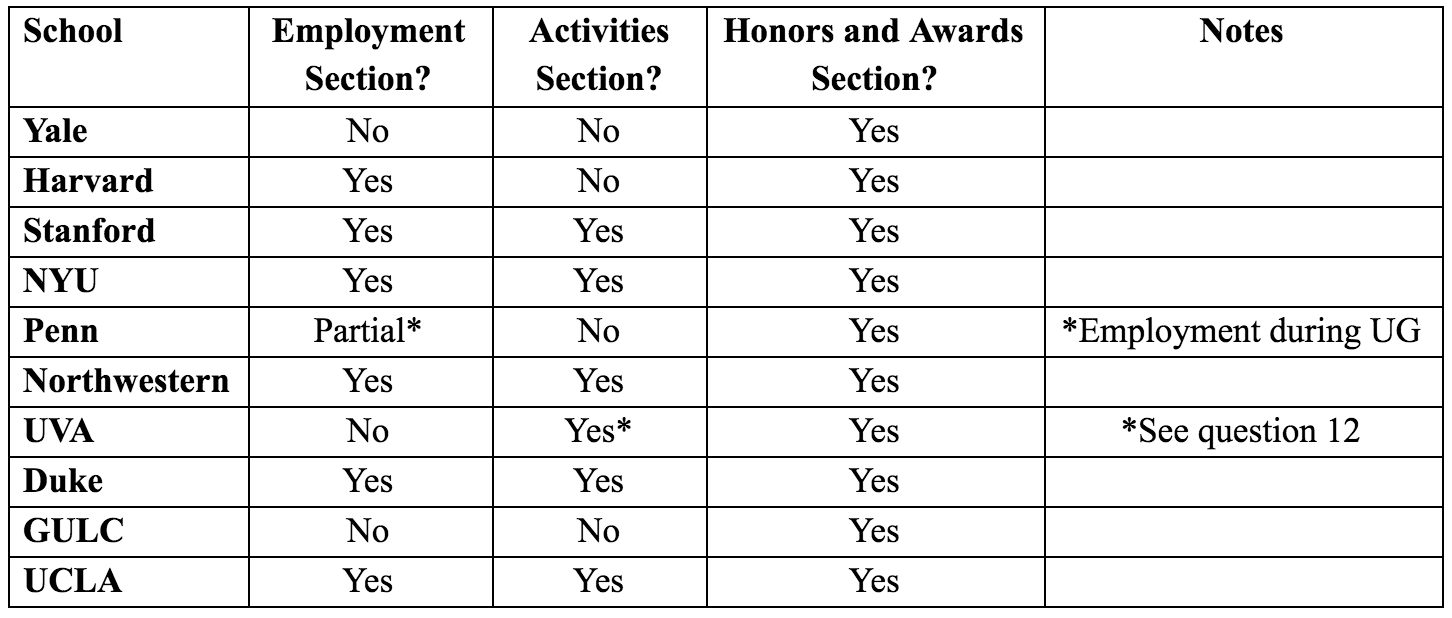So you’ve worked hard to prepare your materials, and it's time to submit! What's next? We hope this blog will aid in your next step in the law school process.
Item Covered in this blog:
Step 1 – Add the school to your LSAC account
Step 2 – Complete an initial pass through the questions
Step 3 – Upload your docs including essays, resume, and any addenda
Step 4 – Review your application PDF
Step 5 – Submit and monitor status checkers

Step 1 – Opening your Account with LSAC
Completing Set-up of Your LSAT Account – LSAC asks for a lot of information when you start your applicant account. Schools will often ask for the same information. It is best to have this information match including demographic, email addresses, mailing addresses, and other info.
Candidate Referral Service – We recommend adding yourself to this service. Some schools will identify you as someone they want to apply, and they might decide to invite you to apply with a fee waiver. If you do sign up, then you’ll likely be bombarded with solicitations from schools for years to come. Consider setting up an email address just for this process that you use for all schools and LSAC.
Expected Enrollment Term – It is important to list this correctly. If you’re a reapplicant, then it could still say a prior year. Schools may query your enrollment intentions using this field.
Step 2 – Entering Your Responses
Important Reminder – Information entered may cascade through your other applications. Get it right here and it is easy, get it wrong here and you’ll need to modify it in every application.
Standardized Test Scores – Read the instructions for the school carefully. Most schools want all of your valid scores for any tests they accept. Some may only want the highest. Follow instructions carefully. (Note that regardless of what you list here, schools will have access to all valid LSAT scores you have on file.)
TOEFL or English Requirement – Students who do not speak English as their primary language may need to submit some form of testing — Chicago, Duke (interview strongly preferred instead of TOEFL), Vanderbilt, BU, and Notre Dame are all schools that may require you to submit a TOEFL. USC requires sending TOEFL if available, but doesn’t require that you have one.
Biographical/Demographic Information/Racial & Ethnic Background – These section(s) can be straightforward. However, some schools (e.g. Berkeley) ask for a lot of personal information about your background, family finances, and so forth. Much of this information is optional to submit and is meant to help them recruit a socio-economically diverse class of students.
Employment, Activities, and Honors Sections – Some schools ask you to list your employment, activities, and/or honors and awards through their applications. The table below lists those T15 schools that ask for this information on the application in addition to a resume:

Employment Section – While it is annoying that many schools ask for this section in addition to what is already on your resume, it is important to be detail oriented when completing it.
- Be sure to enter employment in the same order as on your resume.
- List a brief reason for the role ending or leave blank if a current role.
- Consider sharing jobs that are not on your resume. Even working at Shake Shack during school because you needed spending money, for example, is valuable information to share in this format even if it isn’t on your resume.
Activities Section and Honors and Awards – Similar to the employment section, some schools want this listed separately from what may be on your resume already.
- Be sure to enter your activities in the same order as on your resume.
- Again, you can sometimes add more to this section than you could on your resume.
Character and Fitness Section – It is very important to read these questions carefully. Schools have different requirements here that often come down to small wording differences, and something that you may not have to disclose for one school may well be required for another (e.g. speeding tickets or expunged offenses).
- Err on the side of over-disclosing rather than under-disclosing — it is better to have an alcohol or marijuana violation in college listed here than hope that it slides under the radar. If you misrepresent a character and fitness issue in the law school application process, it can and often does come up when applying to be licensed by the bar.
- Note that some schools even want to know about minor moving violations, so be prepared to provide dates and brief/basic info about things like speeding tickets if required. It is incredibly likely won't impact your admission outcomes unless you have like 97 speeding tickets.
- Some schools are only allowed to ask about convictions or findings of responsibility, while others ask about charges and situations where you were charged but not convicted or found responsible.
Separate Short Essay Prompts – Some schools like Cornell, Northwestern, UVA, and UCLA have short essay/response prompts in their application. It is important to answer these and proof the language used in those responses for content and grammar.
Step 3 – Uploading Documents
Important Reminder – Create a system for knowing which is the most recent document. Either dating the document or including “FINAL” in the name when it is ready. You want to be careful about accidentally uploading a draft document.
UPLOAD ONLY ONCE – Upload your documents to one school only and go through Steps 4 and 5 before uploading your documents to your other schools. If there is a small error/change noted in the final application PDF, then you want to avoid having to delete it from all schools.
Instructions for Uploads – Be sure to read the instructions for the upload. Some schools share some of the instructions on their websites, but then word things differently in the application itself.
Document Headers – It is usually best to make sure that all documents have your name, LSAC number, and the name of the document listed in the header. You can also include your LSAC number on your resume.
Document Types – It is usually best to PDF the final document and upload it rather any other type of document. You don’t want the formatting to be thrown off.
Character and Fitness Documents – If you responded to the Character and Fitness issues through the short answer blocks in the application, if available, then you generally don’t want to upload it again. Only explain it once.
Letters of Recommendation – You’ll have to assign the letters separately to each school through the LSAC system. This means that you can be granular about which schools get which letters. See LSAC.
Step 4 – Final Review of Application (PDF)
This is the same PDF that the admissions offices receive. Be sure to proof everything to make sure the uploads are correct and formatted well. Do a final review of all essays and data entered to make sure it is accurate.
Step 5 – Submitting and Monitoring Status Checkers
Submitting – It is sometimes stressful to hit the submit button. I recommend submitting only one application at first. Wait a few days. If you don’t wake up in a cold sweat wondering if you made a final change, then go ahead and submit the rest of your applications. We have spoken with a great number of applicants who later realize they wish they had made a small change after submitting — best to submit one and then make sure you truly are comfortable with it!
Application Fees – Obviously, you’ll have to pay these fees unless you’ve received a merit- or need-based fee waiver. Generally speaking, need-based fee waivers are available only if you have a difficult financial situation. If you qualify for a need-based LSAC waiver, then you’ll usually qualify for fee waivers from the schools. See this blog for lots of details.
Status Checkers – Most schools direct you to their LSAC system status checker once you apply. HLS and a couple of other schools have their systems for status checkers. You should first see that they received your application, and it will subsequently transition to complete. Watch to make sure it does, but realize this can take weeks as well.
Status Changes – Some schools will list “received” and “complete” only on their status checkers. You might remain “received” for a couple weeks and then be “complete” for months. Other schools list “review 1” and “review 2,” and others will have various notes that are somewhat difficult to interpret. This is all normal.
Junk Mail – Watch your email about once a week after you apply. It can take six months or even longer for a school to respond with a final decision. Watch your junk mail as well as some emails can be misdirected.
We hope this was helpful as an outline for submitting your applications to LSAC. Good luck in this cycle and beyond!


.png)




